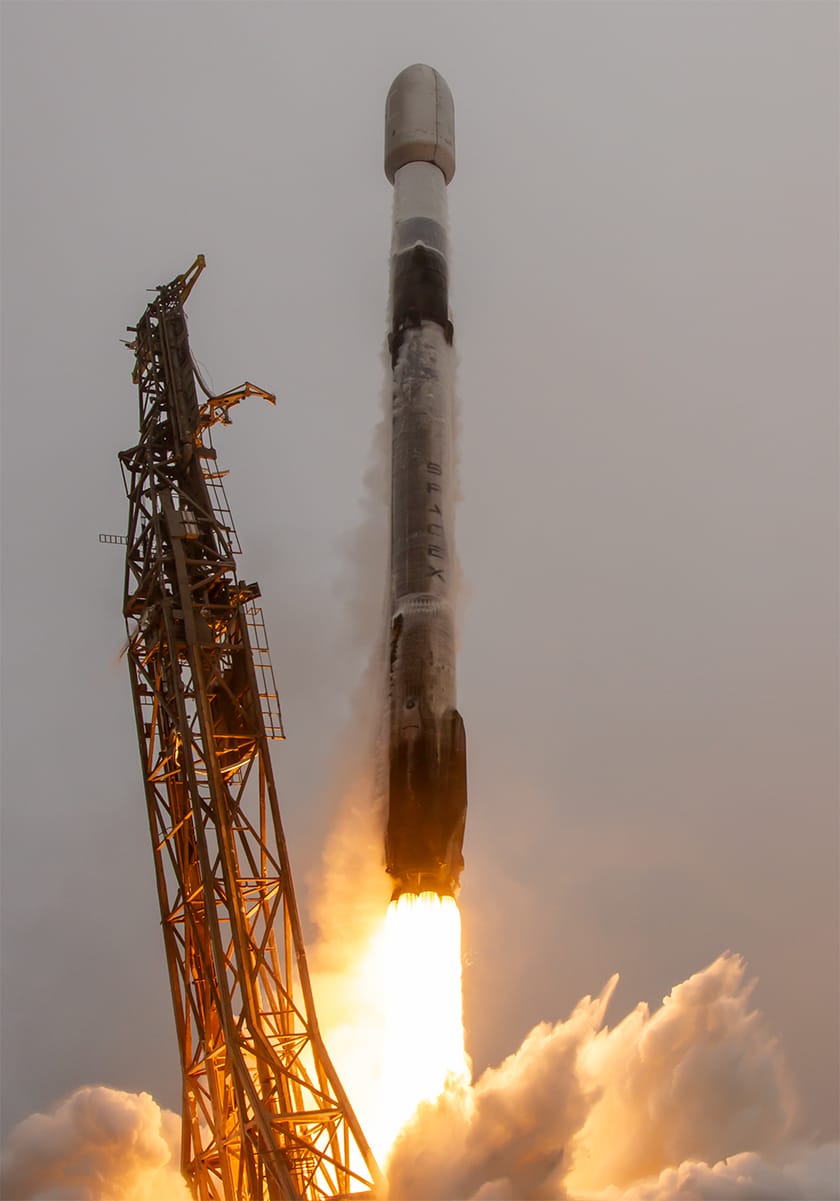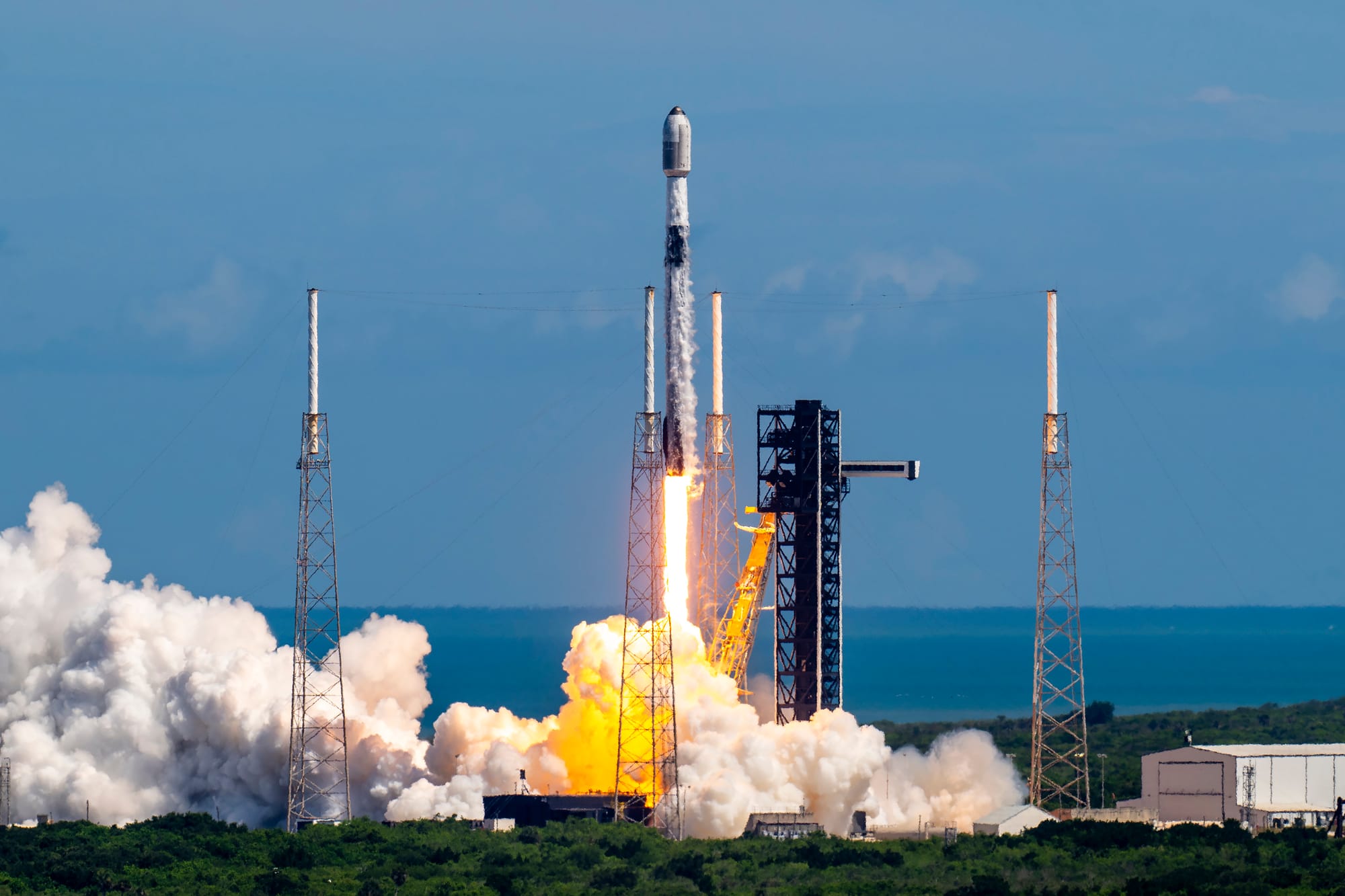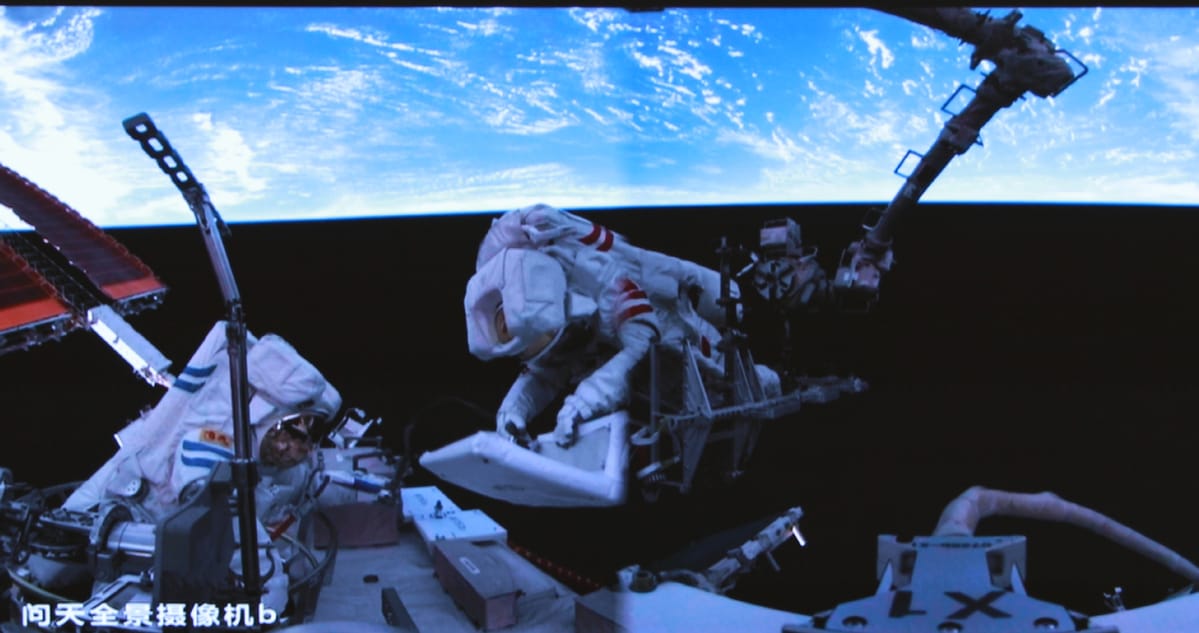Table of Contents
Welcome back to Weekly Dose of Space! This week had ten launches worldwide, with the majority heading to low Earth orbit. During the week, a new booster bound for SLS in the 2030s experienced an anomaly, and another spacewalk aboard the Tiangong Space Station was performed. As always, we'll also look ahead to what the worldwide launch schedule might look like next week.
Launches This Week
June 23rd - Falcon 9 with Starlink Group 10-23
A Falcon 9 flew from Space Launch Complex 40, in Florida, carrying twenty-seven Starlink satellites into low Earth orbit. Supporting this mission was booster B1069, performing its twenty-fifth flight, and landing downrange on the drone ship 'A Shortfall Of Gravitas'.
June 23rd - Atlas V with KA-02
United Launch Alliance's Atlas V rocket roared from Space Launch Complex 41, in Florida, carrying the second batch of twenty-seven satellites for Amazon's Kuiper internet-providing mega-constellation into low Earth orbit. With the launch of a second group of satellites, Amazon now has 54 spacecraft in orbit, out of a planned total of 3,236.
Bird’s eye view of Kuiper 02 looking down from one of the lightning towers. (Turn up the volume) #Kuiper pic.twitter.com/jvGwGiifG9
— Tory Bruno (@torybruno) June 24, 2025
Atlas V lifting off from Space Launch Complex 41 for the KA-02 mission, via Tory Bruno on Twitter.
June 23rd - Falcon 9 with Transporter-14
SpaceX performed its Transporter-14 rideshare mission, carrying seventy small satellites, with a Falcon 9 flying to sun-synchronous orbit from Space Launch Complex 4E, in California. Booster B1071 supported this mission for its twenty-sixth flight, with a landing on the drone ship 'Of Course I Still Love You' downrange.

June 25th - Falcon 9 with Axiom-4
Axiom Space's Axiom-4 mission departed from Launch Complex 39A, in Florida, atop of a Falcon 9, carrying Peggy Whitson, Shubhanshu Shukla, Sławosz Uznański-Wiśniewski, and Tibor Kapu toward the International Space Station. Crew Dragon 'Grace' is flying for the first time during this mission, while the launch was supported by booster B1094, performing its second flight and landing back at Landing Zone 1 in Cape Canaveral. Details on the mission are available here.

June 25th - Falcon 9 with Starlink Group 10-16
Another twenty-seven Starlink satellites were delivered to low Earth orbit by a Falcon 9 launching from Space Launch Complex 40. Supporting this mission was booster B1080, flying for the twentieth time, and landing on the drone ship 'Just Read The Instructions' downrange.

June 26th - Electron for 'Get The Hawk Outta Here'
Rocket Lab's Electron rocket flew from Launch Complex 1A, on the Māhia Peninsula in New Zealand, carrying three satellites into low Earth orbit for HawkEye 360. The satellites aim to provide precise mapping of radio frequency emissions worldwide.
100% mission success and another new camera shot. pic.twitter.com/tO9ImfsxCT
— Peter Beck (@Peter_J_Beck) June 26, 2025
Electron blasting off for 'Get The Hawk Outta Here', via Peter Beck on Twitter.
June 28th - Falcon 9 with Starlink 10-34
Falcon 9 once again launched twenty-seven Starlink satellites to low Earth orbit from Space Launch Complex 40. Booster B1092, flying for the fifth time, supported this mission, with a landing on the drone ship 'A Shortfall Of Gravitas' downrange.
June 28th - Electron for 'Symphony In The Stars'
Another Electron flew from Launch Complex 1B, also on the Māhia Peninsula, for a mission to sun-synchronous orbit. The customer for this mission is unknown.
LIFT-OFF! Electron has cleared the launch pad and is on its way to space for ‘Symphony In The Stars’ 🎶 pic.twitter.com/48RBxRMyGk
— Rocket Lab (@RocketLab) June 28, 2025
Electron lifting off for 'Symphony In The Stars', via Rocket Lab on Twitter.
June 28th - H-IIA with GOSAT-GW
Japan's H-IIA rocket blasted off from the Tanegashima Space Center carrying a single payload to sun-synchronous orbit. The satellite riding atop of the rocket was GOSAT-GW (Greenhouse Gases Observing Satellite, Greenhouse gases and Water cycle), which will monitor greenhouse gases in Earth's atmosphere.
This was also the final flight of Japan's H-II series of rockets.
🚀 Liftoff! JAXA's H-IIA F50 launches GOSAT-GW from Tanegashima https://t.co/VEhHTh2DSk pic.twitter.com/70kGPrjEzu
— China 'N Asia Spaceflight 🚀𝕏 🛰️ (@CNSpaceflight) June 28, 2025
H-IIA lifting off from the Tanegashima Space Center carrying GOSAT-GW, via CNSpaceflight on Twitter.
June 28th - Falcon 9 with Starlink Group 15-7
Twenty-six more Starlink satellites were delivered to low Earth orbit from Space Launch Complex 4E by a Falcon 9. Booster B1088 supported this mission for its eighth flight, landing downrange on the drone ship 'Of Course I Still Love You'.

In Other Space News
New SLS booster suffers anomaly
Close up slow motion footage of the unexpected event(s) during Northrop Grumman’s BOLE DM-1 stb test today. @NASASpaceflight
— Jack Beyer (@thejackbeyer) June 26, 2025
Rewatch the livestream here: https://t.co/c3mHSLrzV2 pic.twitter.com/FcrZXjwLVD
Slow motion video of the anomaly during the BOLE firing, via Jack Beyer on Twitter.
On June 26th, Northrop Grumman was firing a new booster bound for NASA's Space Launch System (SLS) rocket, no earlier than the Artemis 9 mission in the mid-2030s currently, when an anomaly was experienced.
The anomaly saw the exhaust from the solid rocket motor escape before the nozzle, eventually obliterating the nozzle into thousands of pieces, around 100 seconds into the test. Despite the nozzle missing and the end of the motor heavily damaged, the motor burned for its planned duration, somewhat unaffected.
Speaking on the test, Northrop Grumman's Vice President of Propulsion Systems, Jim Kalberer, shared:
"Today’s test pushed the boundaries of large solid rocket motor design to meet rigorous performance requirements. While the motor appeared to perform well through the most harsh environments of the test, we observed an anomaly near the end of the two-plus minute burn. As a new design, and the largest segmented solid rocket booster ever built, this test provides us with valuable data to iterate our design for future developments."
The test where the anomaly was experienced was for the Booster Obsolescence and Life Extension (BOLE) five-segment solid rocket booster, planned to be the key part of SLS' 'Block 2' upgrade. That upgrade with see the boosters' burn profile be more optimized for the rocket, use carbon-fiber composites rather than steel for its casings, and switch to an electronic thrust vector control mechanism for the nozzle. All ultimately increasing the payload capacity of SLS.
Shenzhou-20 crew conducts second spacewalk

Also on June 26th, the Shenzhou-20 crew conducted their second spacewalk onboard the Tiangong Space Station. For the spacewalk, Chen Dong and Chen Zhongrui exited the station for around six and a half hours via the Wentian modules airlock, with crewmate Wang Jie supporting the duo from inside.
While outside the station, the two spacewalkers installed space debris protection devices, like their previous and many other Tiangong spacewalks, along with new interface and foot restraint adapters on external platforms. Alongside installing new hardware, inspections of the station's three modules were performed. Tiangong's robotic arm also helped with these tasks.
This spacewalk came just five weeks after the duo performed their previous spacewalk. At present, the three taikonauts of the Shenzhou-20 mission have over four months left in their mission.
What to Expect Next Week
June 29th - New Shepard with NS-33
Blue Origin is planning to fly New Shepard's suborbital NS-33 mission from its West Texas launch site, carrying Allie Kuehner and her husband, Carl Kuehner, Leland Larson, Freddie Rescigno, Owolabi Salis, and James Sitkin.
July 1st - Falcon 9 with Starlink Group 10-25
Twenty-seven more Starlink satellites are planned to head to low Earth orbit atop of a Falcon 9 from Space Launch Complex 40.
July 1st - Falcon 9 with MTG-S1
A Falcon 9 is expected to launch the MTG-S1 spacecraft from Launch Complex 39A to a geostationary transfer orbit.
July 1st - Eris for its debut flight
Gilmour Space is planning to perform the debut flight of its Eris rocket from the Bowen Orbital Spaceport, in Australia.
July 3rd - Soyuz 2.1a with Progress MS-31
A Soyuz 2.1a is preparing to launch from the Baikonur Cosmodrome with the Progress MS-31 spacecraft bound for the International Space Station.







